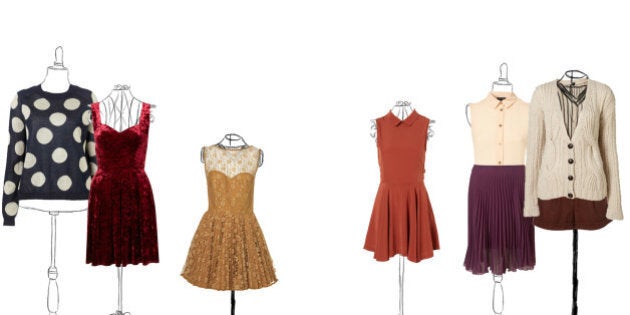
This is the third and final installment of my petite series on looking great and having killer style. First I covered How to Determine Your Personal Style. Then I moved onto Knowing How to Dress for Your Body Shape. Today I'm covering the three key elements of looking great -- colour, proportion and fit. Know and understand these elements, combine them with the first two steps, and there's no way you'll look anything less than fabulous. Guaranteed.
Let's start with colour. I'm a huge proponent of wearing colours that suit your skin tone. What easier way to look fresh, rested and alive? (Other than breathing. And good, clean, healthy living, plenty of sleep and staying hydrated. But, well, I did say easy...)
While wearing suitable colours is highly recommended, colour placement is also extremely important. Here are a few examples...
Lighter colours reflect light and attract attention. They also cast shadows, can show every lump and bump and make an area appear larger. You typically want to wear them on the parts of your body where you'd like to draw attention (not the areas you'd like to mask or hide).
On the other hand, darker colours reflect less light, cast fewer shadows and can often make an area appear smaller. Wear darker colours on areas you'd like to minimize or on those you'd like to be less noticeable.
Here's another tip -- wearing one colour head to toe (dressing monochromatically) can make you appear longer and leaner. This is because it keeps the eye from stopping along the length of the body (where one colour begins and the other ends). Can you see how vital colour placement can be to how you look?
Let's move on to proportion. In the second installment I mentioned that dressing for your body shape creates balance, pleases the eye and makes you look good. Really good. Well, dressing with the right proportions does the same thing -- creates visual balance, pleases the eye, makes you look good, so on and so forth.
So how do you do this? One way is to follow the long over short, short over long rule. Wear a long top or jacket (i.e. classic blazer) over short or skinny bottoms (shorts, mini skirt, skinny jeans) and a short top or jacket (i.e. cropped jacket) over long or flowing bottoms (long pants, flowing skirt, maxi dress, etc.).
Another way is to wear a voluminous or loose top with skinny or narrower bottoms and vice versa - wearing a tailored or slim fitting top with a wider bottom (much like a wide leg, menswear inspired pant or flowing skirt).
You can also play around with the proportions of colours, patterns, accessories, masculine vs. feminine, etc. It's all about creating balance and making your outfit look and feel just right.
Now, last but not least -- fit. I'm going to keep this one super simple -- if you're clothes don't fit, ain't nothing you do gonna make you look good. Too big, too small, too long, too short. Drooping, bunching, stretched, pulled. If you want to look polished and put together, if you want your style to shine through or if you want to have a, "Wow! You look amazing!" moment, your clothes need to fit you. Properly. Especially across the shoulders. And the bust. The hips and rear too. Everywhere.
So there you have it. You now have all the steps and key elements to looking great and having killer style. All that's left is to be put them to use. So go on. Get going! Get out there, strut your stuff and look fabulous. You have no reason not to.
MORE ON HUFFPOST: